SupremePunk #016
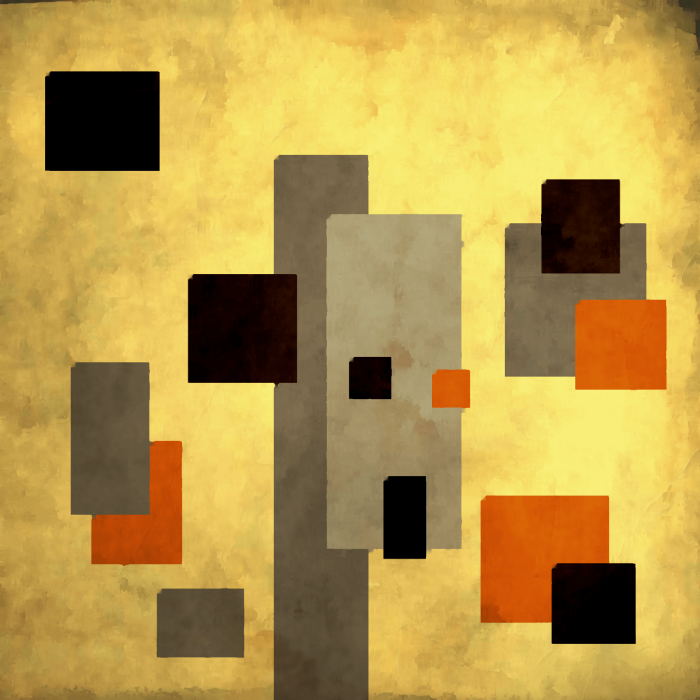
For Whom the Bell Tolls
This Punk is inspired by CryptoPunk #3307 and artworks of Lisitsky. In this paper we have tried to portray an artistic character in the crypto-art universe of the main character of Victor Hugo's novel "Notre Dame de Paris" - Quasimodo. He was the hunchbacked bellringer of Notre Dame Cathedral in Paris. His fate is full of tragedy and misfortune that fell to his lot.
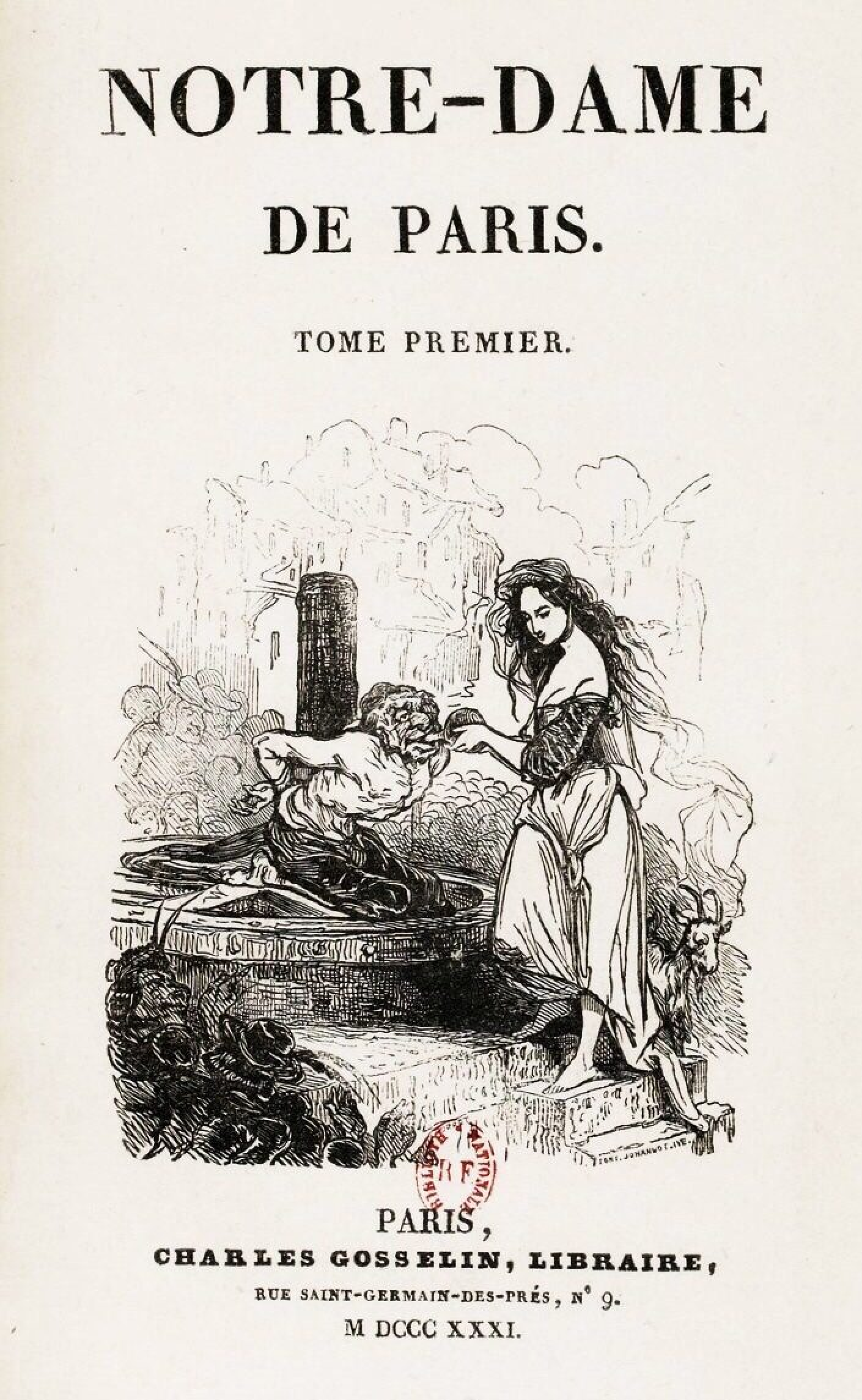
Victor Hugo — Notre Dame Cathedral, 1831
Quasimodo was born with physical disabilities, his whole body was irregularly shaped, he was hunchbacked, limp and had a huge wart on his left eye. Paquette Chantfleury was given Quasimodo instead of her firstborn son, but the unhappy mother nearly lost her mind at the sight of him, and the boy was carried away. The twenty-year-old priest Claude Frollo found him in the manger for foundlings at Notre Dame de Paris, naming him after the Octave of Easter (Latin *Quasimodo*), the festival in which Quasimodo was found. When the boy was fourteen years old, Claude Frollo gave him the position of ringer of the Cathedral. Bells became his passion, replacing by their sound the joy of communicating with his loved ones. And it was them that led him to a new misfortune: the constant ringing of the bells burst his eardrums and Quasimodo went deaf. Quasimodo hated his ugliness, but also had a good heart. He had a stronger bond with the cathedral: "Strong ties bound the ringer to the cathedral <... > The protruding corners of his body were as if designed to fit into the concave corners of the building."
The building replaced his family, his home, and his community. This trait was used in the creation of Punk - the elements are drawn in such a way that they lay into Punk, covering his irregularities. The objects around punk resemble bells and the sound they make. Since all the bells in cathedrals are divided into related groups, the figures are also divided into several groups. We tried to express the sound through color and shape. The figures resemble a single beat of an individual bell. Because it turned out to be the only thing that filled poor Quasimodo's life in the painting they are given a special place. They are not surrounded by other figures, which emphasizes the importance of these sounds, they seem to sing their sad song about the brightest man they saw.
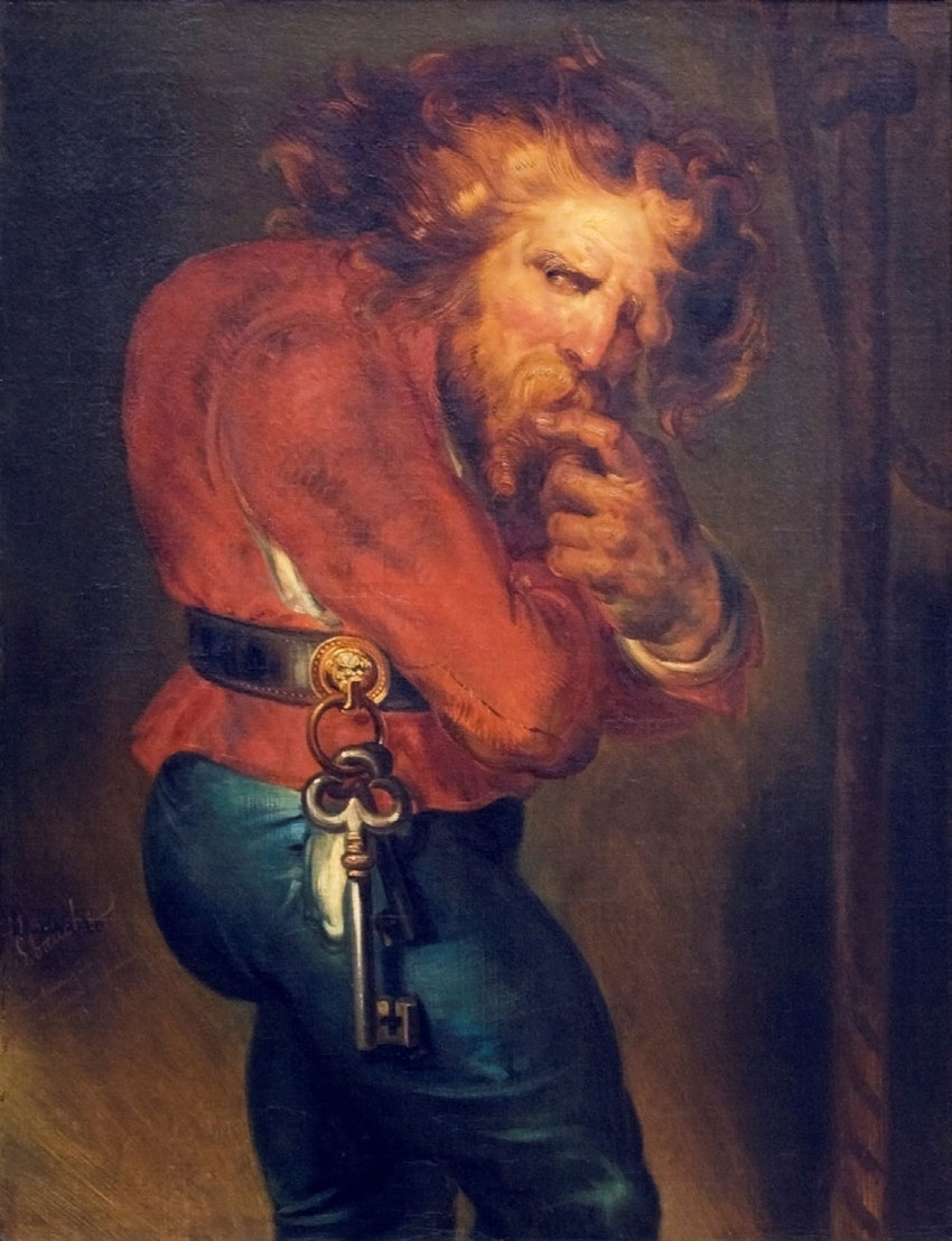
Antoine Wiertz — Portrait of Quasimodo, 1839
Quasimodo obeyed his foster father in everything. When he ordered him to steal Esmeralda for him, he agreed to the theft, but was caught by the Nightwatch. He was later tried, but because Quasimodo was caught by a deaf judge, his punishment was much harsher than it should have been: he was sentenced to lashes as well as several hours at the pillar of shame (because he was rude to the judge, as it seemed to the latter). Remarkably, Claude Frollo, when he noticed Quasimodo at the pillar of shame, pretended not to know his adopted son. When Quasimodo began to beg for a drink and the crowd only laughed at him in response, Esmeralda came and gave water to the condemned man. At this moment he cried for the first time in his life, this episode also awakened in him tender feelings for the girl. Later, when Esmeralda was sentenced to execution, he saved her by bringing her to the Cathedral.
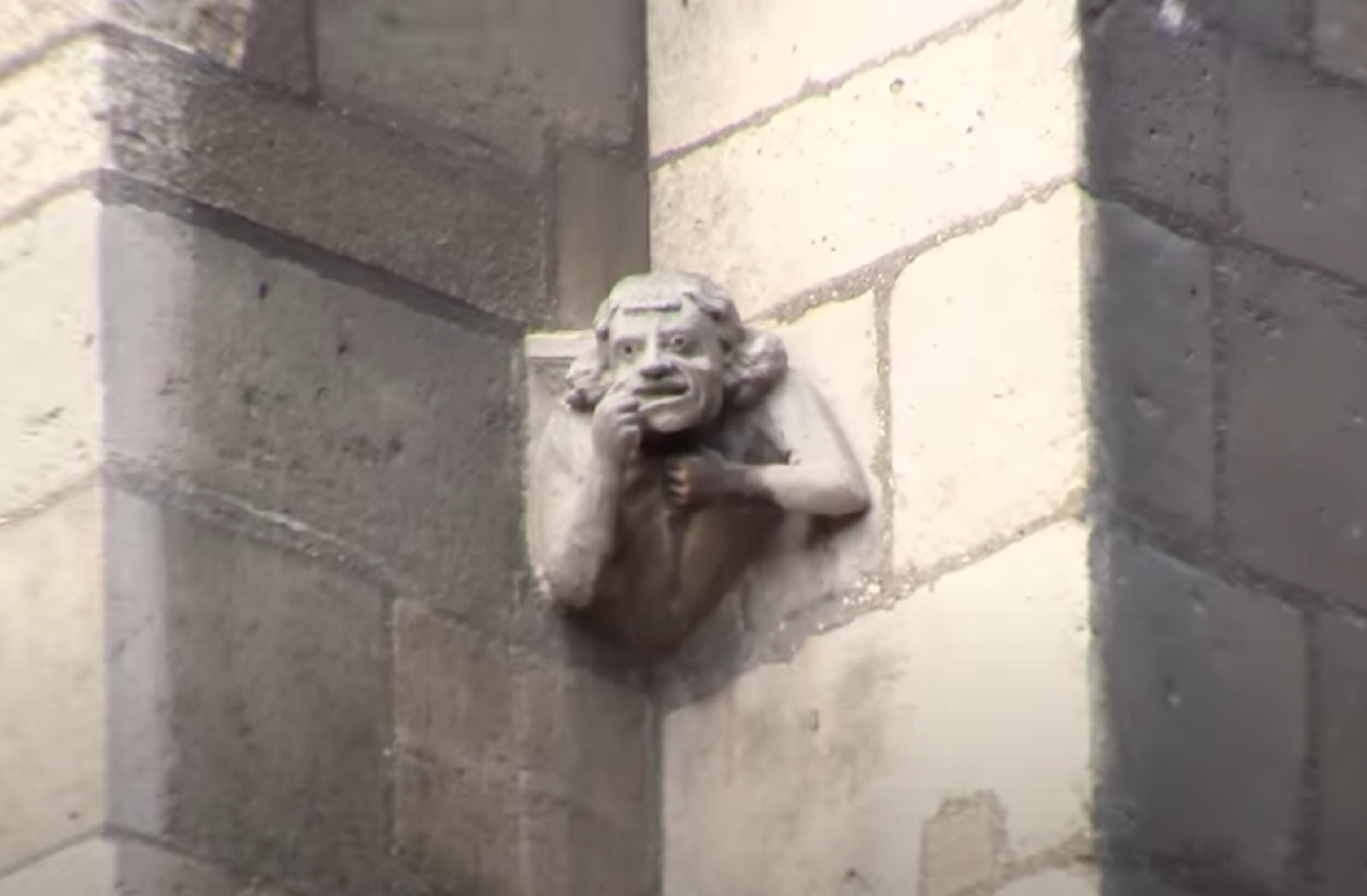
A sculpture of Quasimodo on the wall of Notre-Dame des Paris
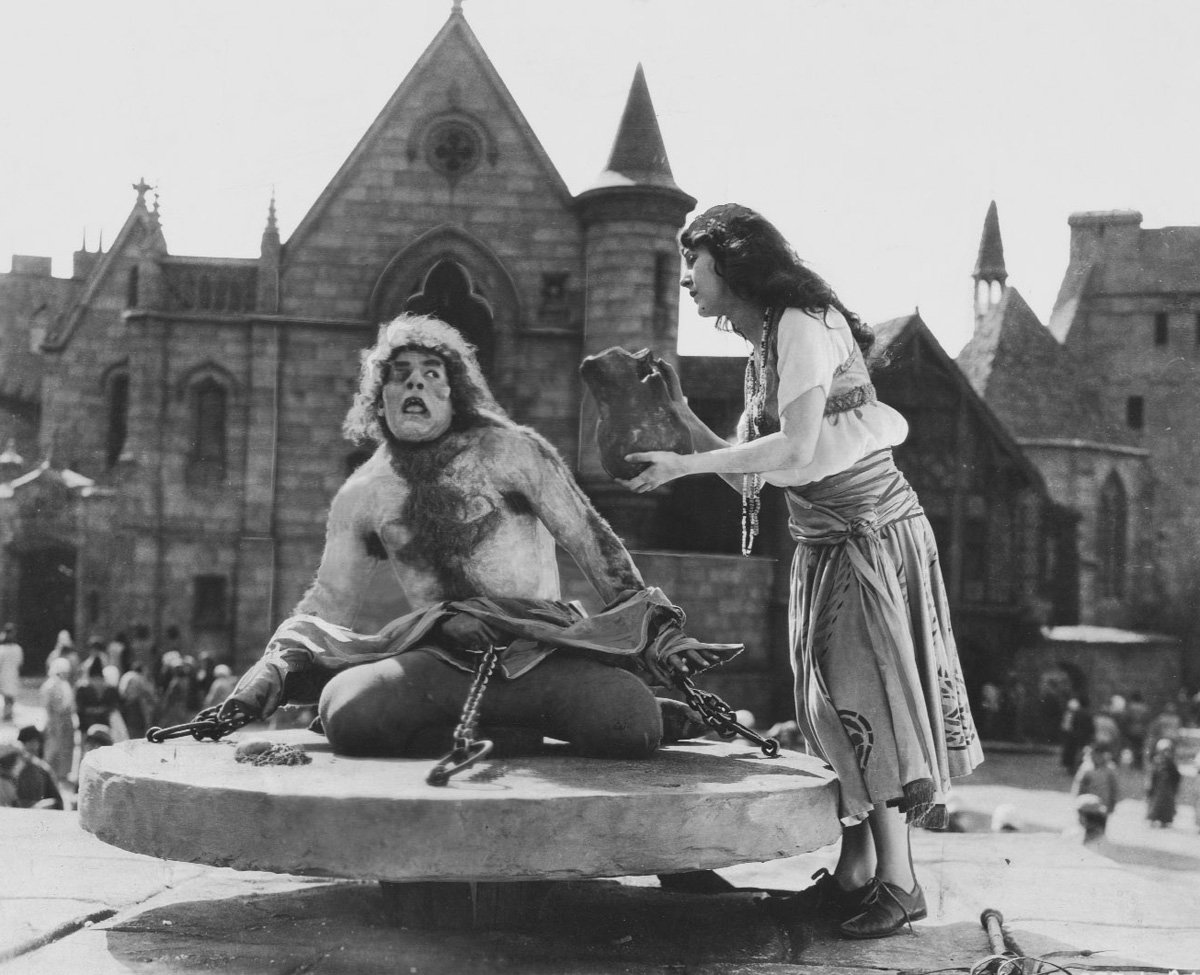
Lon Chaney as Quasimodo, Patsy Ruth Miller as Esmeralda in the 1923 film, The Hunchback of Notre Dame
But the beauty did not reciprocate the hunchback, as he caused only fear in her. Quasimodo also defended the Notre Dame de Paris Cathedral for Esmeralda from the vagabonds of the Court of Wonders, not knowing that they had come to save the girl. Noticing that the tramps were retreating, Quasimodo went to inform Esmerelda, but she was not in the Cathedral. Later he saw her being hanged from the walls of the Cathedral. At that moment he noticed Claude Frollo also looking at Esmeralda and laughing frantically. Quasimodo realized from his foster father's face that he was responsible for the girl's death, and killed Claude by throwing him off the wall. Afterwards he looked at his father, at Esmeralda, and said: "That's all I loved!" According to the customs of the time, the bodies of those who were hanged were brought to the Montfaucon Esmeralda was also brought there. Quasimodo died while embracing the girl's body - the book says that two years after the events described, the guards found the skeletons of two people, according to descriptions - Quasimodo and Esmeralda, on Montfaucon. When they tried to separate them from each other, the man's skeleton crumbled into ashes. A small sculpture of Quasimodo can be found on the northern transept of the cathedral.

Moai — stone statues on Easter Island
The colors for the Punk were not chosen by chance. We were inspired by the atmosphere and aesthetics of the moai on Easter Island, and after visiting it, we realized exactly what we wanted to convey with color in the Punk. The Punk itself looks like it is carved out of stone, hard as a block and rough as if it was carved out of stone by hand with simple tools. The objects around the Punk are made along the same lines, but there are two other colors among them: black and orange. They reflect how differently the statues on the island look depending on the light and time of day. By day, they look like sculptures that were made by ancient people because of their craving for beauty and desire to perpetuate their labors. At night they are shrouded in a spirit of mystification and mystery. One gets the impression that they were once living giants, but now the life has left them and they are empty blocks, the emptiness of which beckons and frightens at the same time, just as the complete absence of any life in black. The warm background is like the rays of the setting sun, which adds special features to the statues, making them unforgettable.

Buy

Gallery:
CryptoPunk #3307 that has been taken as a base

Your transaction is in progress

You have connected to the wrong network

Transaction is successful!


